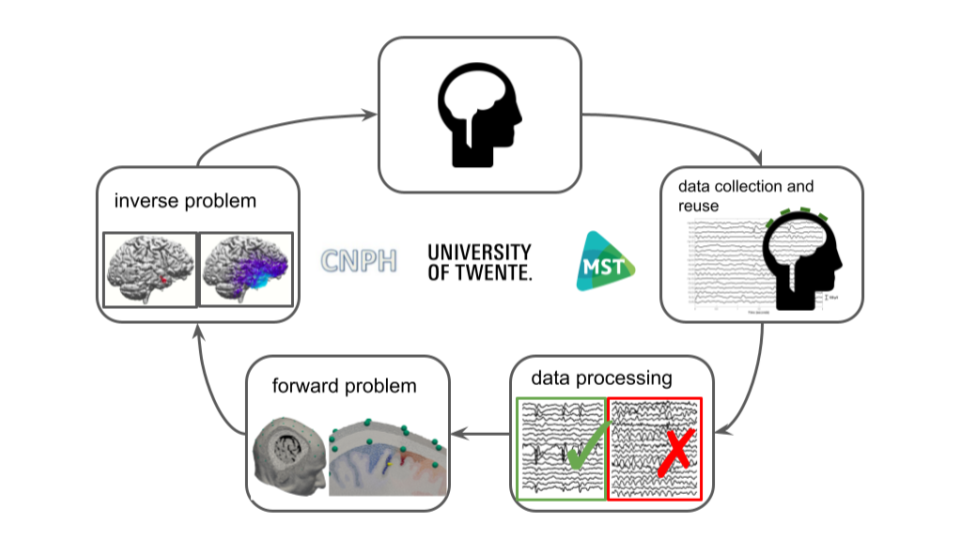Electroencephalography (EEG) is an important tool in epilepsy for diagnostics, classification, prognostication, and monitoring of treatment effects. The EEG can be used to locate the “epileptogenic zone”: the neuronal assembly that is primarily ‘responsible’ for the generation of interictal discharges and seizures in patients with epilepsy. This is very helpful as it improves a reliable classification of the epilepsy type. Further, in patients who are candidates for epilepsy surgery, the identification of the location and dynamics of the epileptogenic zone is crucial to identify the area that must be resected or disconnected and the area of the eloquent cortex that must be spared. Even though the analysis of EEG recordings traditionally relies on visual inspection, reliable assessment of the epileptogenic zone is not possible by mere visual inspection of the EEG traces but EEG source reconstruction techniques need to be used.
While it is generally acknowledged that EEG source reconstruction is a very useful tool to assist clinicians working with epilepsy, it is not part of the clinical workflow in most clinics and epilepsy centers.
In this project, we want to move this important field forward by building an automatic EEG source reconstruction pipeline (see Figure 1) to be used and adopted in a routine clinical setting using the unique infrastructure and knowledge from the Clinical Neurophysiology group of the University of Twente (and the affiliated hospital, the Medisch Spectrum Twente).

Figure1: sketch of the pipeline of EEG source reconstruction in epilepsy
Interested? Contact Maria-Carla Piastra (m.c.piastra@utwente.nl), CNPH group, S&T Faculty, UTwente
